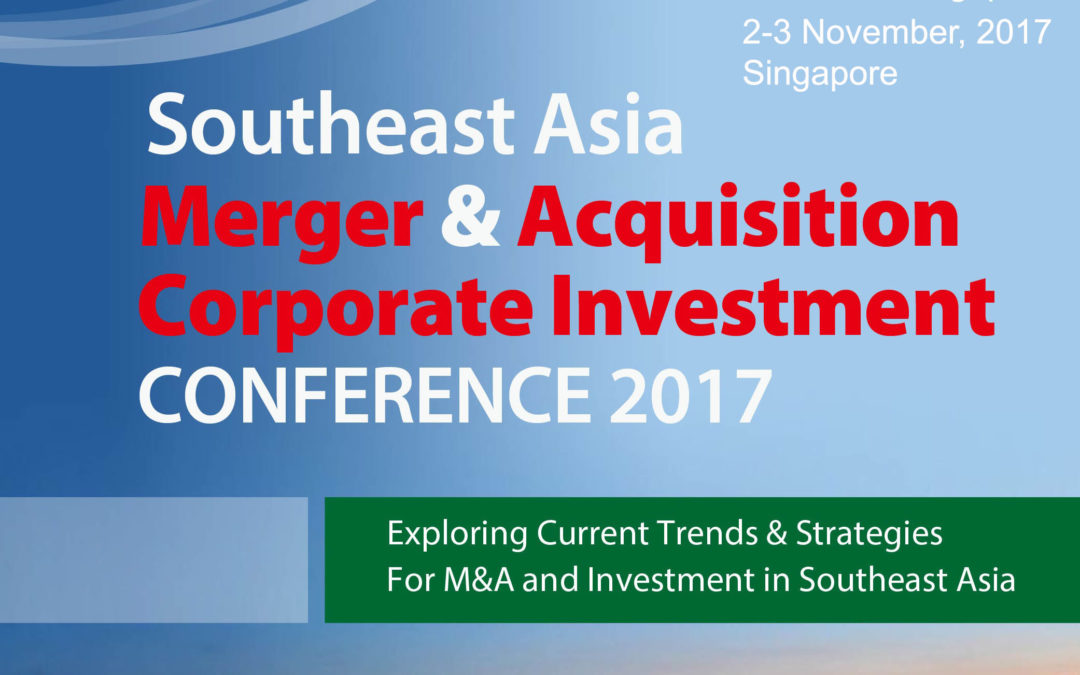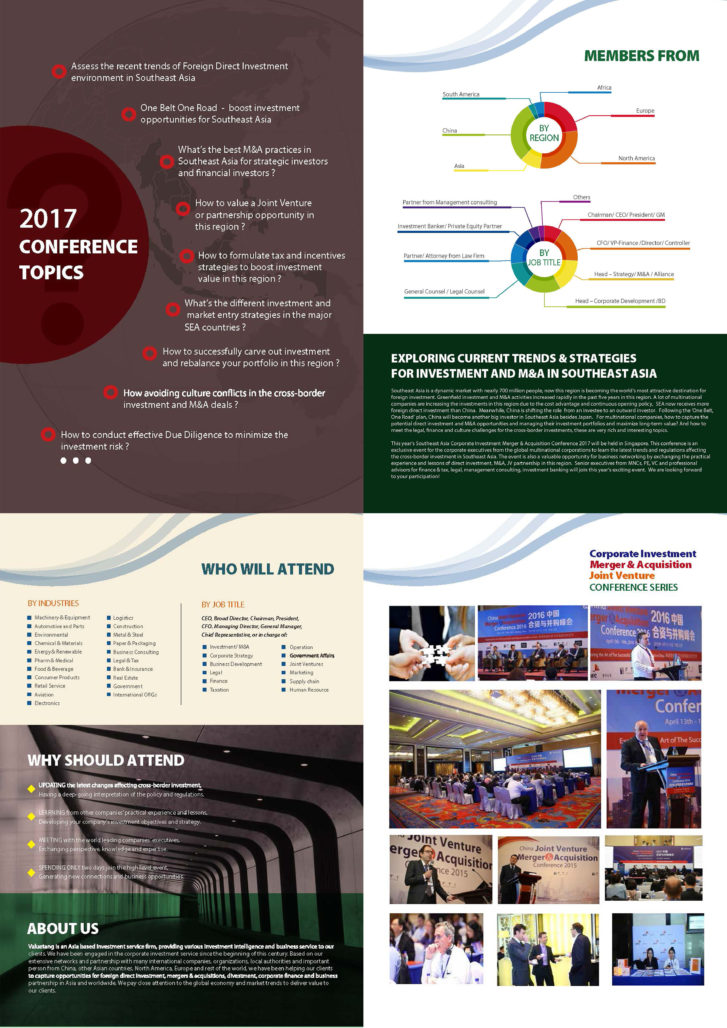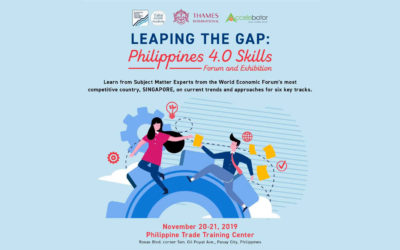The future is now. Well, in some cases, the future is past. The sci-fi movie Blade Runner, made in 1982 and 2017, set the future in 2019. It got some things right (or at least headed that way in terms of flying cars and “android” helpers) and some things wrong (like...

2iB Partners to join panel of experts to speak at Southeast Asia M&A Corporate Investment Conference 2017: 2-3 November
In this event, Managing Director, Yang Yen Thaw of 2iB Partners will join a panel of other experts to speak on cross-border M&A in South East Asia. 2iB continues to strengthen and develop it’s presence and network in cross-border M&A through strong synergistic partnerships with key players.
EXPLORING CURRENT TRENDS & STRATEGIES FOR
INVESTMENT AND M&A IN SOUTHEAST ASIA
Southeast Asia is a dynamic market with nearly 700 million people, now this region is becoming the world’s most attractive destination for foreign investment. Greenfield investment and M&A activities increased rapidly in the past five years in this region. A lot of multinational companies are increasing the investments in this region due to the cost advantage and continuous opening policy, SEA now receives more foreign direct investment than China. Meanwhile, China is shifting the role from an investee to an outward investor. Following the ‘One Belt, One Road’ plan, China will become another big investor in Southeast Asia besides Japan. For multinational companies, how to capture the potential direct investment and M&A opportunities and managing their investment portfolios and maximize long-term value? And how to meet the legal, finance and culture challenges for the cross-border investments, these are very rich and interesting topics.
This year’s Southeast Asia Corporate Investment Merger & Acquisition Conference 2017 will be held in Singapore. This conference is an exclusive event for the corporate executives from the global multinational corporations to learn the latest trends and regulations affecting the cross-border investment in Southeast Asia. The event is also a valuable opportunity for business networking by exchanging the practical experience and lessons of direct investment, M&A, JV partnership in this region. Senior executives from MNCs, PE, VC and professional advisors for finance & tax, legal, management consulting, investment banking will join this year’s exciting event. We are looking forward to your participation!
Speaker list:
| Speaker | Details |
| Mr. Angelo Dell’ Atti | Global Head, Corporate Finance, IFC (International Finance Corporation) |
| Mr. Johnson Chng | Managing Director, Silk Road Finance Corporation |
| Mr. Patrick Ip | Managing Director, China-ASEAN Investment Cooperation Fund |
| Mr. Ryoichi Nishizawa | Global Head of M&A, Mitsubishi Corporation |
| Mr. Seth Sunderland | Executive Director, Investment Banking, M&A Asia, UBS |
| Mr. Saurabh N. Agarwal | Managing Director, Warburg Pincus |
| Mr. Hadi Cahyadi | Managing Partner and Founder, Helios Capital |
| Mr. Kevin Murphy | Managing Director, Andaman Capital Partners |
| Mr. Edwin Vanderbruggen | Senior Partner, VDB Loi Co.,Ltd |
| Mr. Alex Kimura | Chief Strategy Officer, Asia, Aviva |
| Mr. Sikh Shamsul | Foreign Investment Division, Malaysian Investment Development Authority |
| Mr. Greg Ohan | Director, Vietnam, Jones Lang LaSalle |
and many more!
For Registration:
Event is organized by Valuetang LLC. For registration and enquiries please contact : charles.shangguan@valuetang.com and jenny.wang@valuetang.com
For partnerships, speaker and general business enquiries with 2iB Partners:
| Contact Person | Dylan Tan |
| Designation | COO |
| Dylan@2ibpartners.com |
YOU MAY LIKE
The Future Employee
Philippines 4.0 Skills Conference | 20-21st Nov
In conjunction with Philippine Trade Training Center, Global MSME Academy, Thames International and accelebator, 2iB Partners will be speaking on Emerging Trends in Retail, HR Transformation and how to internationalize your business. Learn from 12 different...
Mergers & Acquisitions – simplified. Or, a practical guide
M&A process
1. Strategy
2. Identification
3. Preliminary Due Diligence
4. Expressions of Interest
5. Detailed Due Diligence
6. Definitive Documentation
7. Post M&A
1. Strategy:
M&A begins with an idea in a company that helps it increase market share and access, t
Is having a Corporate Social Responsibility (CSR) program just a cost to your company?
Developing great companies that give back is more about devising a clear Corporate Social Responsibility (“CSR”) program aligned with the company’s goals and values rather than forcefully integrating CSR with their business strategies and goals. Instead of passing it off as a short term marketing gimmick, CSR should be seen as a long term investment strategy.
3 Key Notes Before Entering a New Market [Video & Transcript]
The above is a video taken during one of 2iB Partners master class where our advisor Mr. Richard Eu answers a question on “3 Key Notes Before Entering a New Market” by a business owner, Mr. Peh Zheng Yang. [Begin Transcript] Mr. Peh: You mentioned something like for...
Why is Instagram a Vital Part of your Marketing Strategy
Throw a stone and you will probably find someone who is taking a photo to post on Instagram. There has also been a strong push for consumer centric businesses to produce and develop products that are “Insta-worthy”. Whether it’s






![3 Key Notes Before Entering a New Market [Video & Transcript]](https://2ibpartners.com/wp-content/uploads/2017/06/map-1862587_1920-400x250.jpg)


